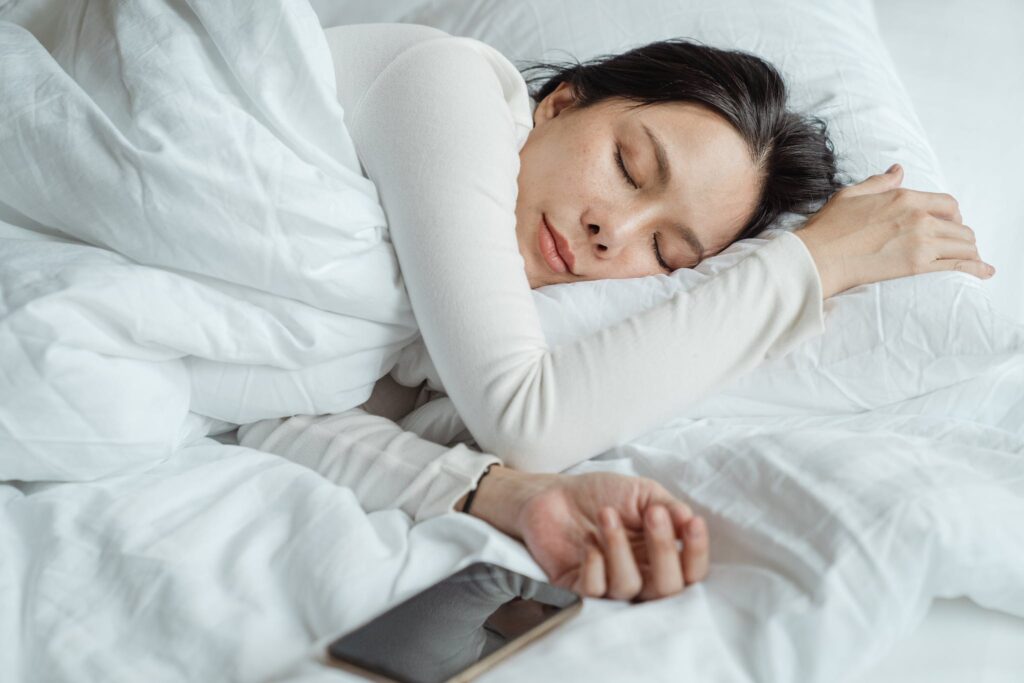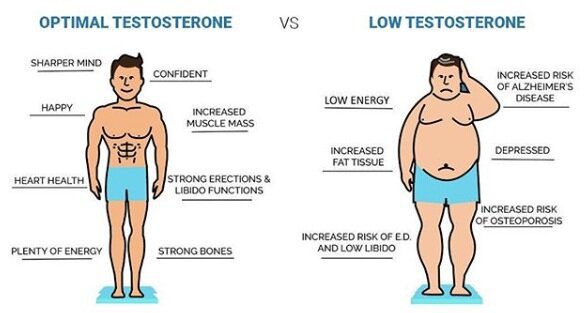The Best Sleeping Direction According to Science: Why You Should Sleep on Your Side

The Science Behind Sleeping Positions: Exploring the Research

Sleeping positions have long been a topic of fascination and research among sleep experts and scientists. Exploring the research on this subject reveals a wealth of information about how different positions can impact our overall health and well-being. Numerous studies have been conducted to understand the science behind sleeping positions and their effects on various aspects of our lives.
One area of research focuses on the impact of sleeping positions on spinal alignment and neck health. Studies have shown that sleeping on your side, particularly the lateral position, can help promote better alignment of the spine and reduce strain on the neck. This position allows the spine to maintain its natural curvature, potentially alleviating discomfort and reducing the risk of developing spinal issues over time. Furthermore, side sleeping has been found to be particularly beneficial for individuals with conditions such as arthritis or degenerative disc disease.
Another important aspect explored in the research is the relationship between sleeping positions and sleep disorders such as snoring and sleep apnea. It has been found that side sleeping can be an effective strategy in reducing the severity of these conditions. Sleeping on your side helps to keep the airways open and prevents the soft tissues in the throat from collapsing, which can lead to snoring or apnea episodes. This research highlights the potential benefits of side sleeping in managing these sleep disorders and improving overall sleep quality.
Understanding the Importance of Quality Sleep for Overall Health

Having a good night’s sleep is not just a matter of feeling refreshed and energized in the morning. It plays a crucial role in maintaining our overall health and well-being. Quality sleep is essential for our physical, mental, and emotional functioning.
Research has shown that sleep deprivation can have detrimental effects on various aspects of our health. Lack of sleep has been associated with an increased risk of developing chronic conditions such as cardiovascular disease, diabetes, obesity, and even certain types of cancer. It can also impair immune function, making us more susceptible to infections. Moreover, inadequate sleep has been linked to cognitive decline, mood disorders, and decreased productivity.
In order to promote optimal health, it is crucial to prioritize quality sleep. This means not only focusing on the duration of sleep but also paying attention to its quality. Establishing a regular sleep schedule, creating a relaxing bedtime routine, and creating a sleep-friendly environment are all key factors in achieving a restorative sleep. Prioritizing quality sleep can have a profound impact on our overall health and well-being, allowing us to function at our best both physically and mentally.
How Sleeping on Your Side Benefits the Spine and Neck

Sleeping on your side can have significant benefits for the spine and neck. When you sleep on your side, you allow your spine to maintain its natural alignment, which can help alleviate any stress or pressure on the spinal column. This position ensures that the vertebrae are properly aligned, reducing the risk of developing spinal misalignment issues and related discomfort.
Furthermore, sleeping on your side can help improve neck alignment and reduce the risk of developing neck pain. By keeping your neck in a neutral position while sleeping, you prevent unnecessary strain on the muscles and joints in the neck area. This can be particularly beneficial for individuals who suffer from conditions such as cervical spondylosis or those who frequently experience neck stiffness or tension.
Overall, adopting a side sleeping position can help promote a healthier spine and neck alignment, ultimately reducing the likelihood of experiencing pain and discomfort associated with these areas. It is important, however, to ensure that you maintain proper pillow support and mattress firmness to optimize the benefits of this sleeping position.
The Role of Sleeping Position in Reducing Snoring and Sleep Apnea

Snoring and sleep apnea are common sleep disorders that can disrupt the quality of sleep and have negative effects on overall health. However, research has shown that the position in which you sleep can play a vital role in reducing the occurrence of these conditions.
Sleeping on your side has been found to be particularly beneficial for reducing snoring and sleep apnea. When you sleep on your back, the base of your tongue and soft palate can collapse onto the back of your throat, causing the airway to become partially blocked. This obstruction leads to snoring and can also trigger sleep apnea episodes, where breathing repeatedly stops and starts during sleep.
By sleeping on your side, you can help keep the airway open and prevent these issues from occurring. This position allows gravity to work in your favor, preventing the tongue and soft palate from blocking the airway. As a result, air can flow freely, reducing the likelihood of snoring and sleep apnea episodes. Additionally, side sleeping can also alleviate the symptoms of existing sleep apnea by maintaining a better airflow throughout the night.
While side sleeping is generally considered the best position for reducing snoring and sleep apnea, it’s important to note that the specific side you sleep on can make a difference. Studies have shown that sleeping on the right side can be more beneficial for those who suffer from snoring, as it helps reduce the severity of the condition. On the other hand, sleeping on the left side has been found to be more effective in reducing sleep apnea episodes.
In conclusion, the role of sleeping position in reducing snoring and sleep apnea should not be underestimated. By adopting the habit of sleeping on your side, you can significantly improve the quality of your sleep and reduce the occurrence of these common sleep disorders. However, it is always best to consult with a healthcare professional if you have persistent snoring or sleep apnea symptoms to ensure you receive appropriate diagnosis and treatment.
Promoting Better Digestion and Preventing Acid Reflux Through Side Sleeping
Side sleeping has been found to promote better digestion and prevent acid reflux, offering a potential solution for individuals suffering from these gastrointestinal issues. When lying on your side, the esophagus is positioned above the stomach, allowing gravity to keep stomach acid from flowing back up into the esophagus. This can help alleviate symptoms of acid reflux, such as heartburn and regurgitation, and may reduce the risk of developing complications like esophagitis or Barrett’s esophagus.
Research has shown that sleeping on your left side may be particularly beneficial for digestion. The left side sleeping position can help stimulate the emptying of the stomach and facilitate the passage of food through the digestive tract. This is due to the anatomical structure of the digestive system, which includes the positioning of the stomach and the location of the small and large intestines. By adopting the left side sleeping position, individuals with digestive issues may experience improved digestion and a reduced likelihood of acid reflux episodes.
It is important to note that while side sleeping can offer potential benefits for digestion and acid reflux, individual experiences may vary. It is always recommended to consult with a healthcare professional for personalized advice and to address any underlying medical conditions that may be contributing to digestive issues or acid reflux. Additionally, making lifestyle modifications such as avoiding large meals before bedtime and maintaining a healthy weight can further support digestive health.
Get rid of these symptoms permanently with the natural techniques shown in this video.
Enhancing Brain Health and Eliminating Toxins with the Right Sleeping Direction
A good night’s sleep is not only essential for physical health but also has a significant impact on brain health. Research suggests that the right sleeping direction can enhance brain health and help eliminate toxins from the brain. Various studies have shown that sleeping on your side, specifically the left side, can promote better brain health and facilitate the clearance of harmful waste products, such as amyloid-beta proteins, from the brain.
During sleep, the brain goes through a process of detoxification, where waste products and toxins accumulated throughout the day are flushed out. This cleansing process, known as the glymphatic system, is most active during deep sleep. Sleeping on the side, especially the left side, has been found to enhance the efficiency of the glymphatic system, allowing for better clearance of toxins and waste products. This can potentially reduce the risk of neurodegenerative disorders, such as Alzheimer’s disease, and improve overall cognitive function.
One possible explanation for the effectiveness of side sleeping in enhancing brain health is that it promotes better drainage of cerebrospinal fluid (CSF) from the brain. Studies have shown that sleeping on the side, particularly the left side, allows for better circulation of CSF, which helps carry away waste products and toxins. Additionally, the anatomical position of side sleeping may facilitate the functioning of the glymphatic system, aiding in the removal of waste products and promoting brain health.
It is important to note that while side sleeping has shown potential benefits for brain health, individual preferences and comfort should also be considered when choosing a sleeping position. Additionally, more research is needed to further explore the relationship between sleeping position and brain health. However, incorporating side sleeping into your sleep routine may be a simple yet effective way to enhance brain health and promote overall well-being.
Supporting Heart Health and Blood Circulation by Sleeping on Your Side
Sleeping on your side has been found to have numerous benefits for heart health and blood circulation. Research has shown that this sleeping position can help improve blood flow to vital organs, including the heart. When you sleep on your side, gravity helps blood flow more easily to your heart, reducing the strain on this critical organ. In addition, sleeping on your side can also help lower blood pressure, another important factor in heart health. A study published in the American Journal of Hypertension found that side sleeping was associated with lower nighttime blood pressure compared to other sleeping positions.
Furthermore, sleeping on your side can also help enhance blood circulation throughout your body. This is especially important for individuals with conditions such as diabetes or peripheral arterial disease, where proper blood flow is crucial. By sleeping on your side, you can promote the optimal flow of blood to your extremities, helping to prevent issues such as numbness, tingling, or muscle cramps. Additionally, side sleeping can also assist in reducing the risk of blood clot formation, as it encourages blood to circulate more freely. A study published in the journal Vascular and Endovascular Surgery found that side sleeping was associated with a lower incidence of deep vein thrombosis, a potentially dangerous condition characterized by blood clot formation in the veins.
Alleviating Pregnancy Discomfort and Promoting Fetal Health with Side Sleeping
During pregnancy, a woman’s body undergoes numerous changes to accommodate the growing baby. As the baby bump expands, it can lead to discomfort and even pain, particularly during sleep. However, research has shown that sleeping on the side can help alleviate some of this discomfort and promote fetal health.
When a pregnant woman sleeps on her side, preferably the left side, it helps improve blood flow to the uterus and placenta, ensuring that the baby receives adequate oxygen and nutrients. This position also reduces pressure on major blood vessels, such as the inferior vena cava, which can become compressed when lying flat on the back. By avoiding this compression, side sleeping promotes optimal blood circulation and reduces the risk of complications like preeclampsia.
Furthermore, sleeping on the side can help alleviate common pregnancy discomforts. For instance, by supporting the uterus, side sleeping helps relieve pressure on the lower back and hips, reducing the likelihood of developing conditions like sciatica. It can also help ease heartburn and improve digestion by preventing stomach acid from flowing back into the esophagus. Overall, adopting the side sleeping position during pregnancy not only offers relief from discomfort but also supports the health and well-being of both the mother and the baby.
Citations:
1. Bongiorno PB. Pregnancy and Sleep. In: Ferro Luzzi F, Manni K, Colecchia A, López-Talavera JC, editors. Sleep Disorders in Pregnancy. Springer International Publishing; 2019. p. 13-20.
2. Sharma SK, et al. Relationship between maternal sleep patterns and adverse pregnancy outcome: A prospective cohort study. Sleep. 2013;36(5):709-715.
The Impact of Sleeping Position on Sleep Quality and REM Sleep
Sleep quality and the amount of REM (rapid eye movement) sleep that one gets are strongly influenced by sleeping position. REM sleep is crucial for various cognitive functions, including memory consolidation and emotional regulation. Studies have shown that sleeping on your side promotes better REM sleep compared to other sleeping positions.
When we sleep on our sides, it helps to open up the airways and reduce the risk of sleep apnea and snoring, which can disrupt REM sleep. This position also aligns the spine and reduces pressure on the neck, minimizing the likelihood of discomfort or pain that can interfere with sleep quality. Additionally, side sleeping can be particularly beneficial for those suffering from acid reflux or gastrointestinal issues. By keeping the head elevated and the esophagus lower than the stomach, it helps prevent acid from flowing back, leading to better digestion and reduced symptoms of acid reflux.
However, it’s important to note that not all side sleeping positions are equally beneficial. Studies have found that sleeping on the left side may offer additional advantages. This position enhances blood flow and circulation, allowing the heart to function more efficiently. It also promotes optimal brain health by aiding the elimination of waste products and toxins accumulated during the day. While sleeping on the right side doesn’t provide the same benefits, it is still considered better than sleeping on the back or stomach, as it helps reduce the risk of sleep apnea and snoring.
Addressing Shoulder and Hip Pain through Proper Sleeping Direction
Side sleeping is often recommended as an effective way to alleviate shoulder and hip pain caused by improper sleeping posture. When you lie on your side, your weight is distributed evenly across your body, reducing pressure on specific areas. This helps to prevent any excessive strain on your shoulder and hip joints, resulting in decreased pain and discomfort.
In addition to this, side sleeping allows for a more natural alignment of the spine, further reducing the likelihood of shoulder and hip pain. By ensuring that your body is properly supported throughout the night, side sleeping promotes proper spinal alignment, relieving stress on the joints and muscles. This can be particularly beneficial for individuals who frequently experience shoulder and hip pain, as it provides them with a more restful and comfortable night’s sleep.
While side sleeping can be beneficial for addressing shoulder and hip pain, it is important to note that proper sleeping direction is crucial. When lying on your side, it is recommended to use a firm or medium-firm pillow that adequately supports the neck and keeps the spine aligned. Moreover, placing a pillow between the knees can help to maintain proper hip alignment, further reducing any potential discomfort. By paying attention to both the position of your body and the support you use, you can effectively mitigate shoulder and hip pain for a more restful night’s sleep.
Minimizing Wrinkles and Promoting Skin Health with the Correct Sleeping Position
In addition to its numerous health benefits, sleeping on your side can also have positive effects on your skin health. When you sleep on your back or stomach, there is a higher likelihood of the delicate skin on your face coming into contact with your pillow and being subjected to friction and pressure. Over time, this can contribute to the development of wrinkles and fine lines. However, sleeping on your side can minimize these effects by reducing the contact between your face and the pillow, thus preventing unnecessary creasing and stretching of the skin.
Furthermore, sleeping on your side can also promote better blood circulation to your face, which can enhance the delivery of oxygen and nutrients to your skin cells. This improved circulation can help to nourish your skin, support collagen production, and facilitate cell turnover, resulting in a more youthful and radiant complexion. It is important to note that while sleeping on your side can be beneficial for your skin health, it is vital to ensure that your pillowcase is clean and made of a soft, hypoallergenic material to prevent irritation and breakouts.
Tips for Transitioning to Side Sleeping and Maintaining the Position Throughout the Night
Side sleeping is recommended by experts as it offers numerous benefits for overall health. If you are considering transitioning to side sleeping and maintaining this position throughout the night, here are some tips to help you achieve optimal results.
1. Pillow support: Choose a pillow that provides adequate support for your head and neck. Ideally, the pillow should fill the gap between your shoulder and ear, keeping your spine aligned in a neutral position. This can help prevent stiffness and discomfort.
2. Body alignment: Ensure that your body is properly aligned while side sleeping. Place a pillow between your knees to keep your hips and spine in alignment. This can help alleviate any pressure on your joints and reduce the risk of developing hip or lower back pain.
3. Mattress firmness: Opt for a mattress that offers the right balance of support and comfort. A medium-firm mattress is generally recommended for side sleepers as it can provide adequate support to maintain proper spinal alignment while also cushioning pressure points.
4. Sleep environment: Create a sleep environment that promotes relaxation and comfort. Keep your bedroom cool, dark, and quiet, and consider using soothing sounds or white noise machines to aid in falling asleep and staying asleep in the side-sleeping position.
By following these tips, you can gradually transition to side sleeping and improve the quality of your sleep. Remember, it may take some time for your body to adjust to a new sleeping position, so be patient and persistent in your efforts.
Final Thoughts: The Science-Backed Benefits of Sleeping on Your Side
Sleeping on your side offers numerous science-backed benefits that can significantly improve your overall health and well-being. One of the key advantages of this sleeping position is its positive impact on spinal and neck health. By aligning your spine in a neutral position, side sleeping can help alleviate and prevent the development of spinal issues such as herniated discs and sciatica. It also promotes proper alignment of the neck, reducing the risk of neck pain and stiffness.
Another noteworthy benefit of side sleeping is its potential in reducing snoring and sleep apnea. Research has shown that sleeping on your side can help keep the airways open, allowing for better airflow and reducing the intensity and frequency of snoring. Furthermore, individuals with sleep apnea, a condition characterized by interrupted breathing during sleep, may find relief by sleeping on their side as it helps prevent the collapse of the upper airways.
In summary, adopting a side sleeping position can have significant positive effects on your spinal and neck health, as well as reduce snoring and sleep apnea. Evidence from scientific studies suggests that side sleeping is a beneficial practice for ensuring quality sleep and improving overall health. Considering these science-backed benefits, it may be worth exploring and implementing this sleeping position to optimize your sleep and well-being.
What is the science behind sleeping positions?
The science behind sleeping positions refers to the research and understanding of how different sleeping positions can impact various aspects of health and well-being.
Why is quality sleep important for overall health?
Quality sleep is important for overall health because it allows the body and mind to rest, repair, and rejuvenate. It plays a crucial role in maintaining physical and mental well-being.
How does sleeping on your side benefit the spine and neck?
Sleeping on your side can benefit the spine and neck by promoting proper alignment, reducing pressure on the vertebrae, and minimizing the risk of developing spinal issues or neck pain.
What role does sleeping position play in reducing snoring and sleep apnea?
Sleeping position, particularly sleeping on your side, can help reduce snoring and sleep apnea by keeping the airways open and allowing for better airflow during sleep.
Can side sleeping promote better digestion and prevent acid reflux?
Yes, side sleeping can promote better digestion and help prevent acid reflux by allowing gravity to keep stomach acid from flowing back up into the esophagus.
How does the right sleeping direction enhance brain health and eliminate toxins?
The right sleeping direction can enhance brain health and eliminate toxins by facilitating the glymphatic system, which helps flush out waste products and toxins from the brain during sleep.
How does sleeping on your side support heart health and blood circulation?
Sleeping on your side can support heart health and blood circulation by reducing pressure on the heart, improving blood flow, and decreasing the risk of developing cardiovascular issues.
Does side sleeping alleviate pregnancy discomfort and promote fetal health?
Yes, side sleeping can alleviate pregnancy discomfort and promote fetal health by improving blood circulation, reducing pressure on the uterus, and enhancing oxygen and nutrient supply to the baby.
How does sleeping position impact sleep quality and REM sleep?
Sleeping position can impact sleep quality and REM sleep by influencing factors such as breathing, muscle relaxation, and the ability to reach and maintain the deep sleep stages.
Can sleeping on your side address shoulder and hip pain?
Yes, sleeping on your side can help address shoulder and hip pain by providing proper support and alignment, relieving pressure on these areas, and reducing the likelihood of developing pain or discomfort.
Can the correct sleeping position minimize wrinkles and promote skin health?
Yes, the correct sleeping position can minimize wrinkles and promote skin health by reducing facial pressure, preventing the formation of sleep lines, and allowing for better blood circulation to the skin.
Any tips for transitioning to side sleeping and maintaining the position throughout the night?
Some tips for transitioning to side sleeping and maintaining the position throughout the night include using supportive pillows, adjusting mattress firmness, practicing relaxation techniques, and being consistent with the chosen sleeping position.
Are there any final thoughts on the science-backed benefits of sleeping on your side?
In conclusion, sleeping on your side offers numerous science-backed benefits for various aspects of health, including spine and neck health, snoring and sleep apnea reduction, digestion improvement, brain health, heart health, pregnancy comfort, sleep quality, pain relief, and skin health. Consider adopting side sleeping for a better overall sleep experience.






